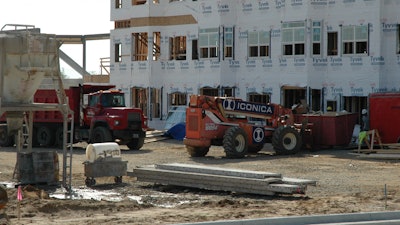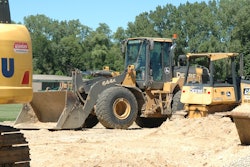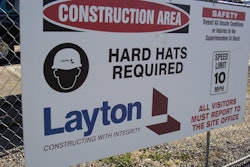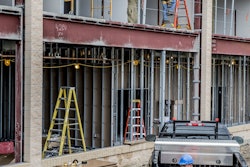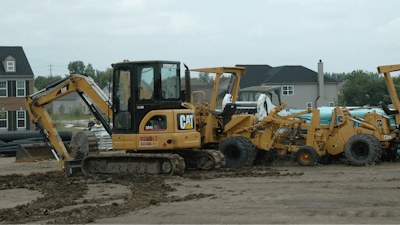
The last two years have thrust the construction industry into one of its most challenging times, facing lockdowns, new restrictions and government regulations, and project interruptions. While some of these obstacles are finally easing up, others are persisting with no end in sight – like staff and supply chain shortages. With sites being left unattended for longer periods of time and fewer eyes on costly items such as tools, heavy equipment and raw materials, companies in the construction industry are more vulnerable to crime and its impact than ever.
Are construction professionals doing enough to protect their sites and valuable assets within by deterring preventable theft? According to new research from Pro-Vigil, they might be missing the mark. In a survey of nearly 120 business operations leaders, nearly half of whom were in the construction industry, 28% reported that physical security incidents increased in 2021, up from only 20% reporting an increase in 2020. Even more concerning, the overwhelming majority (57%) said they haven’t updated their security strategies, despite escalating crime.
These gaps in security strategy and protection can cause significant damage to construction companies. In addition to the costs related to replacing stolen items, there’s also the financial and reputational hit construction companies take due to forced project downtime while they wait for replacement parts to come in.
Five Tips to Combat Theft
So, what can construction leaders do to prevent theft, vandalism and other damage to their property, projects and assets? Here are five simple but effective tips you can take now to make your construction business more secure today and in the future.
 Some materials and equipment will always need to remain on the project site, but whenever possible, aim to store only essential building materials there.ACBM staff
Some materials and equipment will always need to remain on the project site, but whenever possible, aim to store only essential building materials there.ACBM staff- Protect your perimeter: At the end of every shift, make it a habit to lock all entry points and gates, and conduct a fencing check – taking care to repair holes or weaknesses right away. Be sure to leave fencing up until a project is completed and all valuable property is removed. Also, create enough space between fencing and items inside of it, like storage containers, so that thieves can’t easily steal through the fencing.
- Anchor heavy equipment: Secure valuable heavy equipment by attaching it to a chain or cable after hours or anytime it is unattended for long periods. Consider lowering blades and buckets as an additional measure to help station and secure larger equipment.
- Take out the batteries: Battery theft is a common and ongoing problem, so detaching the battery’s wires or removing batteries from machinery altogether is a good idea. This way, even if thieves are able to purchase a cheap master key online, they can’t drive away with any large equipment.
- Make it bright to leave criminals in the dark: Darkness gives thieves an advantage, so light up your site as much as possible during times of low visibility. Set timers so lights automatically turn on and off at certain times. Solar-powered lights are great for those more remote areas.
Beyond Construction Security
Compounding the fact that many construction leaders aren’t updating their security strategies to meet growing incidents and threats, the survey also showed that 35% don’t use any video surveillance at all, compared to just 4% of car/truck/boat/dealership leaders stating the same.
A lack of video surveillance leaves a significant hole in the protection of your business, and construction professionals could be missing out on even more than crime prevention. Leaders across many industries are maximizing their use of smart video surveillance for more than security to help gain insight into other areas of business operations.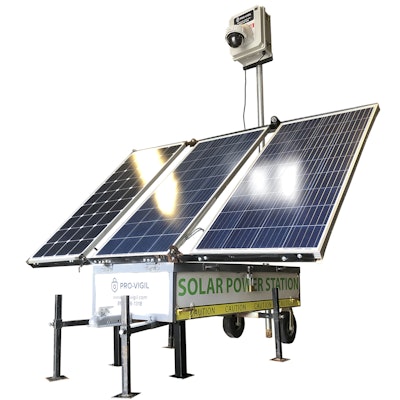 Leaders across many industries are maximizing their use of smart video surveillance for more than security to help gain insight into other areas of business operations.Pro-Vigil
Leaders across many industries are maximizing their use of smart video surveillance for more than security to help gain insight into other areas of business operations.Pro-Vigil
Some examples include real-time information about worksite conditions (e.g. weather), employee performance, whether deliveries are made on time, and beyond. It can also provide important legal validation in the case of liability claims, such as slips and falls or even vehicle-to-vehicle or vehicle-to-person accidents on your site.
There’s no doubt that construction crime is still on the rise. But putting these quick and easy security tips into action will go a long way toward deterring it and keeping your site, your project and your business safe. And they may even help you improve operations in the process.
Jeremy White is founder of Pro-Vigil.
